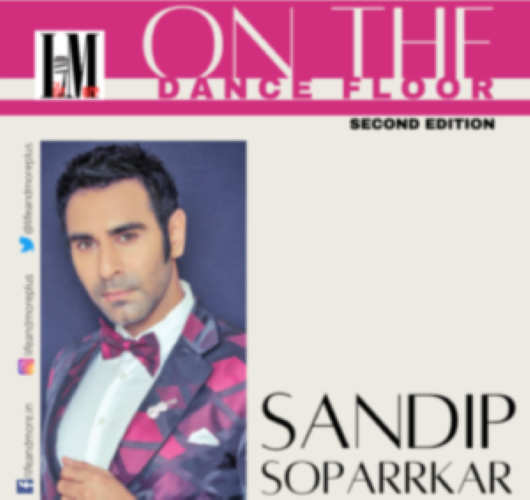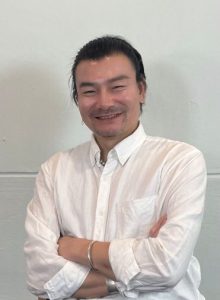Seoul’s Duo Dance Fest bridges cultures

Recently, I was invited to South Korea to be a part of the iconic Duo Dance Festival (DDF), a premier international duet dance festival, held annually. It’s organized by the Duo Dance Festival Steering Committee, often in collaboration with the Korea Dance Arts Center and local theaters in Daehak‑ro, Seoul. It features both emerging and mid-career choreographers in duets (2‑person performances). Participating teams often present 15-minute works spanning contemporary, ballet, Korean, traditional, street dance, etc. Since 2021, DDF introduced a “Guest-of-Honor” country system, inviting 4 international teams each year. Past featured regions include Latin America (2021), Eurasia (2022)—with teams from Vietnam, Mongolia, Japan. This year I am proud to say that India took center stage. I had the privilege of meeting the dynamic duo Yi Chuljin Lee and Myeongji Kwak the organisers of the festival.

Myeongji Kwak and Yi Chuljin
Excerpts from the interview:
How and when did the concept of Duo Dance Festival begin?
The Duo Dance Festival (DDF) was first conceptualized in 2011 as part of a long-run performance project in small theaters in Korea. Inspired by the World Duo Drama Theater Festival, we envisioned a new platform spotlighting duet choreography — an intimate yet dynamic form of dance expression that reflects the most fundamental unit of human interaction. From its inception, DDF embraced a wide spectrum of genres, including traditional, contemporary, newly created, and interdisciplinary works. It was designed to explore human relationships through the language of dance — conflict and connection, discord and harmony, individuality and unity — all embodied through the duet form. Since its first international edition at Session House in Tokyo in 2013, DDF has evolved into a truly global festival. From 2015 onward, it expanded to major cities across Korea such as Seoul, Daegu, Gwangju, and Busan. With over 200 duet works presented to date, DDF has become a unique fixture in the dance community — offering long-term performance opportunities that allow for deeper artistic development and international cultural exchange.
What is the purpose of the festival?
The DDF has three core objectives: 1. To support and nurture choreographers and dancers by providing a month-long performance platform where artists can refine their works and deepen their artistic practice. 2. To cultivate wider audience engagement by promoting dance as an accessible cultural content through structured programming, second-media content creation, and audience-participation events. 3. To foster international collaboration and overseas distribution of works through the hosting of IDANS, a dedicated international conference that facilitates global networking and exchange.
Why was the conference an important part of the festival?
The International Dance Network in Seoul (IDANS) conference is a vital pillar of DDF. It enables choreographers and curators from across the globe to gather, discuss, and forge new exchange partnerships. With representatives from festivals, institutions, and dance companies, IDANS creates opportunities for: – Cross-border performance invitations – Cultural policy discourse – Mutual support agreements. It is also an incubator for strategic distribution of Korean and international dance works in broader global circuits.
Give me a few details about all the performances that took place at the festival.
The 2025 DDF will feature 20 performances (16 domestic, 3 international), including: – Traditional, contemporary, and cross-genre works, curated weekly to highlight diversity. – Participating countries include South Korea, Japan, and Mongolia. – Each week includes: – 1 Traditional Korean piece – 1 invited international duet – 2 contemporary or interdisciplinary duets Performances will be held at Sungkyun Small Theater, a 80-seat black box theater in Daehakro, with Sunday livestreams and audience-artist roundtables.
A total of 16 selected works through open call and expert review, along with 3 invited international pieces, were presented at the festival. The following works received awards:
Grand Prize (Chairman of Art Council Korea Award) – Balls have 0 to me to me (Ji-hee Park & Seok-hyun Kim / Korea). Excellence Award (Chairman of the DDF Organizing Committee Award) – Backdraft (Jin-sol Choi & Ha-eun Yoo / Korea) Salpuri-chum (Ahn Jung-uk Arirang Art Company / Korea) Layer (Ripup Art Company / Korea) New Honam Sanjo Dance (Min-ha Jang & So-youn Bae / Korea) Un/Seen (Yoo-jung Kim & Kyle James Abraham / Korea-USA, Outstanding Work Award (Director of Korean Dance & Arts Center Award)
Where do you see the future of the festival and conference like this?
We envision DDF as a key hub in the global duet dance ecosystem, with Seoul as its cultural anchor. The long-term goal is: – To become international leading platform for duet choreography – To foster sustainable mobility for dance works – To continue developing the streaming ecosystem for international audience engagement – To deepen co-curation models with festivals in Europe, India, Southeast Asia, and the Americas
What is the next step and next festival?
The next step for DDF is to deepen its dual mission: 1. Strengthening the competitiveness of dance companies through long-run performance structures, and 2. Expanding the dance audience base through consistent and engaging programming. As an international platform that already includes artists from Korea, Japan, India, Vietnam, Singapore, Mongolia, Taiwan, the U.S., and Mexico, DDF will continue to act as a bridge between cultures. Awarded works are regularly recommended to our partner festivals abroad, helping expand global circulation of Korean choreographic voices. Looking forward, DDF is committed to supporting more cross-border residencies, co-productions, and long-term artist exchange programs, positioning Seoul as a central hub for international duet dance.
What is your view about India and South Korea collaboration in Dance?
India and South Korea both possess profound, centuries-old dance traditions, yet their contemporary dance scenes are highly experimental and globally engaged. Collaboration between the two can: – Illuminate the spiritual and philosophical common ground (e.g., Buddhist roots) – Inspire new choreographic languages that bridge classical and contemporary vocabularies – Foster mutual understanding through shared platforms like DDF, IDANS, or bilateral residencies We look forward to deepening this partnership by inviting Indian artists to Seoul and supporting Korean artists to perform and learn in India.
Sandip Soparrkar holds a doctorate in world mythology folklore from Pacific University USA, an honorary doctorate in performing arts from the National American University, He is a World Book Record holder, a well-known Ballroom dancer and a Bollywood choreographer who has been honored with three National Excellence awards, one National Achievement Award and Dada Saheb Phalke award by the Government of India. He can be contacted on sandipsoparrkar06@gmail.com


